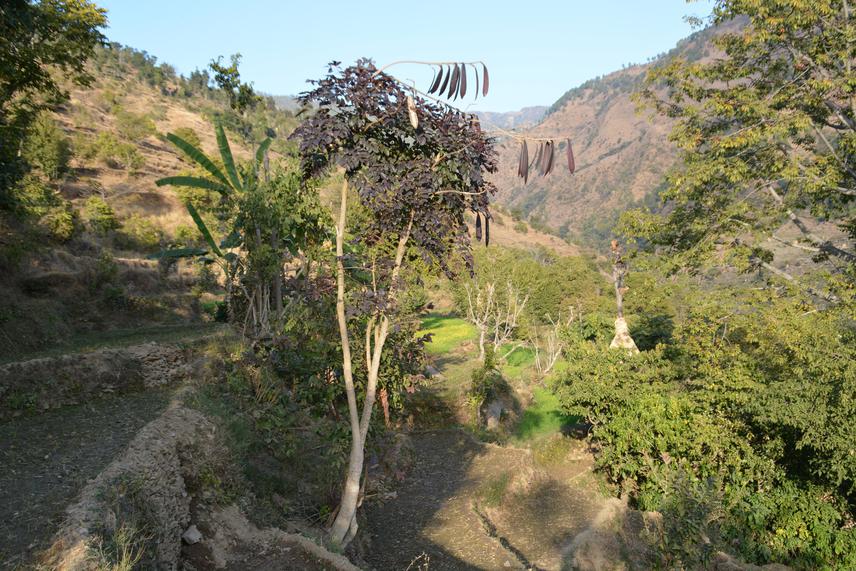Ripu Kunwar
Other projects
10 Sep 2015
Documentation and Conservation of Indigenous Medicinal Plants and Traditional Knowledge in Far Western Nepal
Collaborate communities for conservation of critically endangered medicinal plants and their associated knowledge.

Oroxylum indicum.
By 2100, the impacts on biodiversity, and indigenous medicinal plants, due to land use change is likely to be more pronounced than climate change, species introductions, and changing atmospheric concentrations of carbon dioxide. The knowledge of plant collection, use and conservation is rapidly declining due to alterations in population structure, socioeconomy, culture and migration, resulting in extermination of biological diversity. The indigenous knowledge is effaced in the absence of continuum of horizontal and vertical cultural interactions and further fomented due to elderly people’s unwillingness to fully and completely share what they regard as secret information or unattempts from others to cataloguing. Therefore more participatory studies conserving criticals (threatened, indigenous and multipurpose useful species), convincing and communicating rural communities, collaborating wider stakeholders and extending the conservation education are worthwhile. There is a need to understand the interactions between plants, people and places to support land resources use, development, and conservation. Culture and conservation can be integrated once understanding the complexities of a cultural scared landscape and knowledge and principles of resource utilization are appraised. This focus on strong relationship between cultural and biological diversity has provided greater incentive for conservations of plants and knowledge.
Objectives
Amid changes on climate, ecology, land-use and socio-culture, the richness of indigenous medicinal plants and the knowledge associated with the use, collection and conservation of useful plants is likely to be random at temporal, spatial and cross-cultural scales. However, we hypothesize that the richness of useful plants and the associated knowledge of their collection, uses and conservation is homogenous and less influenced at rural and remote areas. This study aims at:
• Cataloguing the useful plants of Darchula and Baitadi districts
• Evaluating the vulnerability of useful plants by assessing their use value indices
• Habitat modelling of the top five most vulnerable species including two IUCN threatened species (Paris polyphylla and Oroxylum indicum)
• Identifying the knowledge gap among generations through the use of audiovisual means and raise awareness about the importance of indigenous species, indigenous knowledge and their role in biodiversity conservation among school children, their guardians and teachers and assessing the dynamics at spatial scales (rural/remote and suburban areas)
• Leveraging local, national and international communities for conservation of indigenous species and their associated knowledge for sustainability of plants and people.